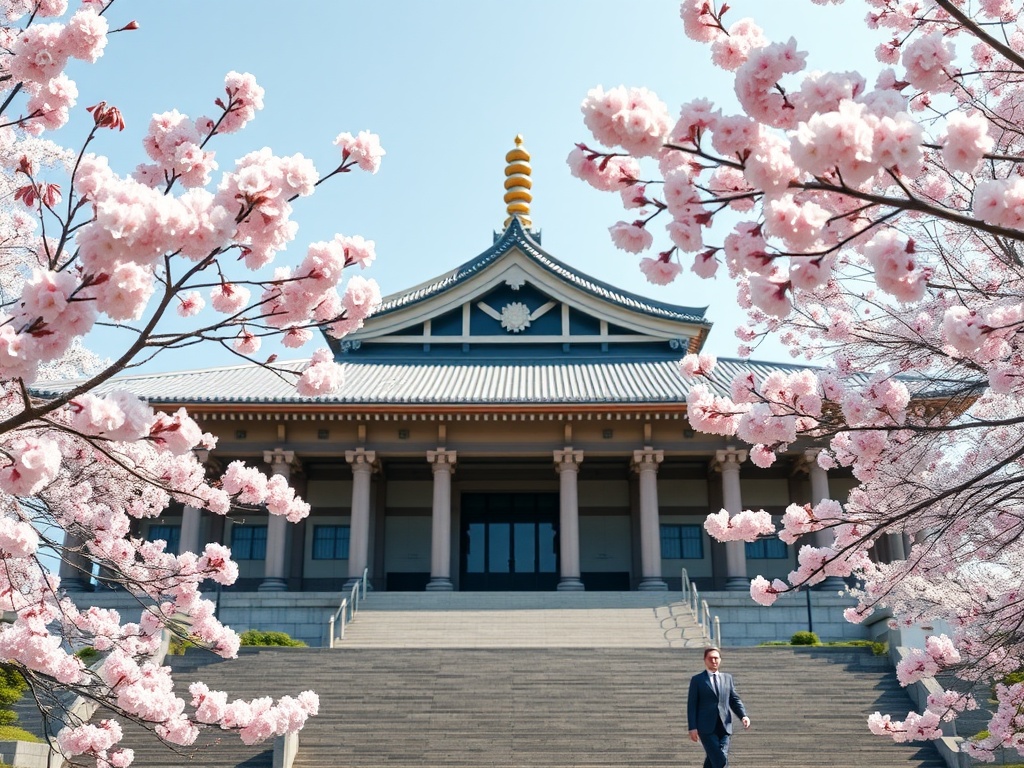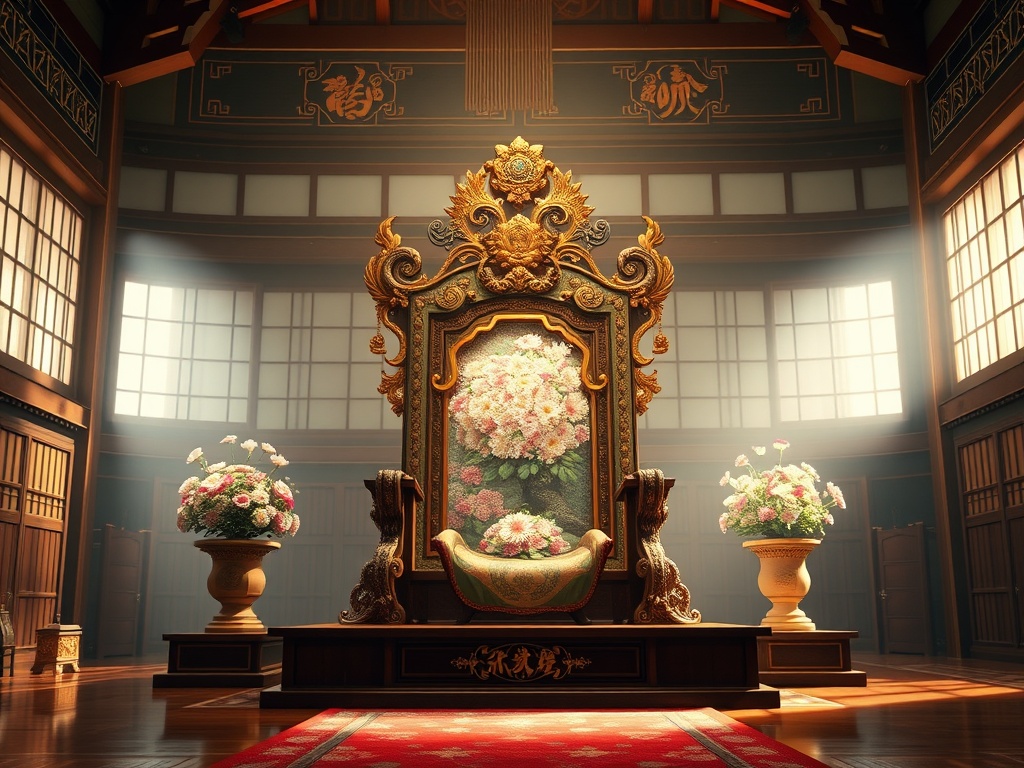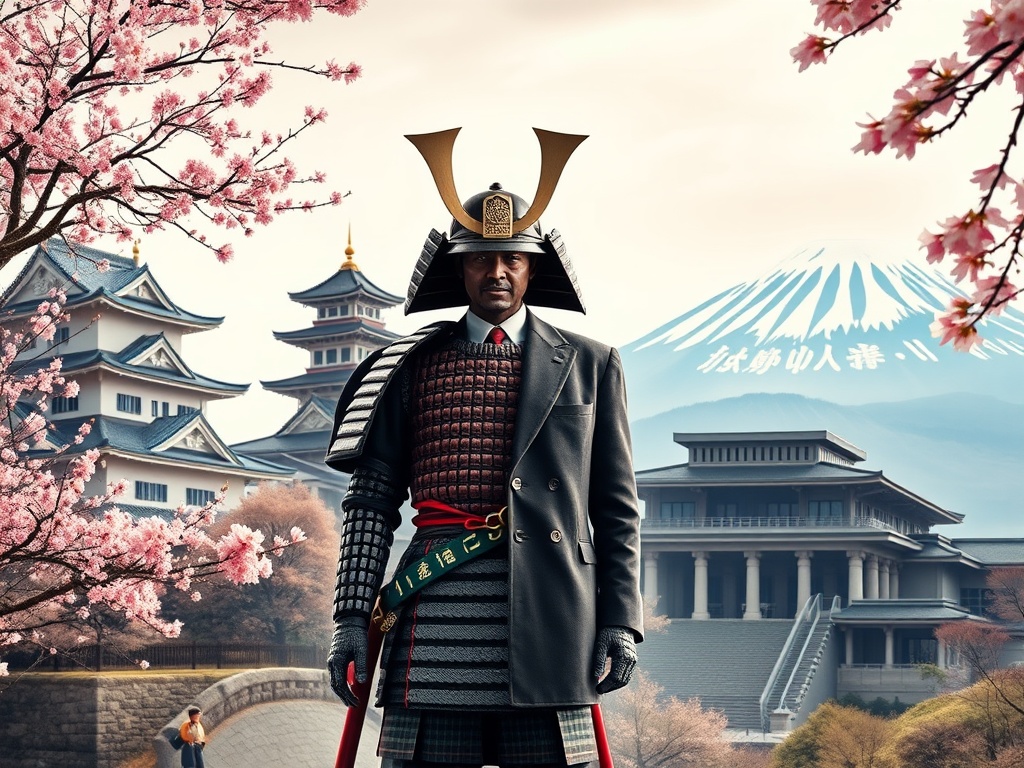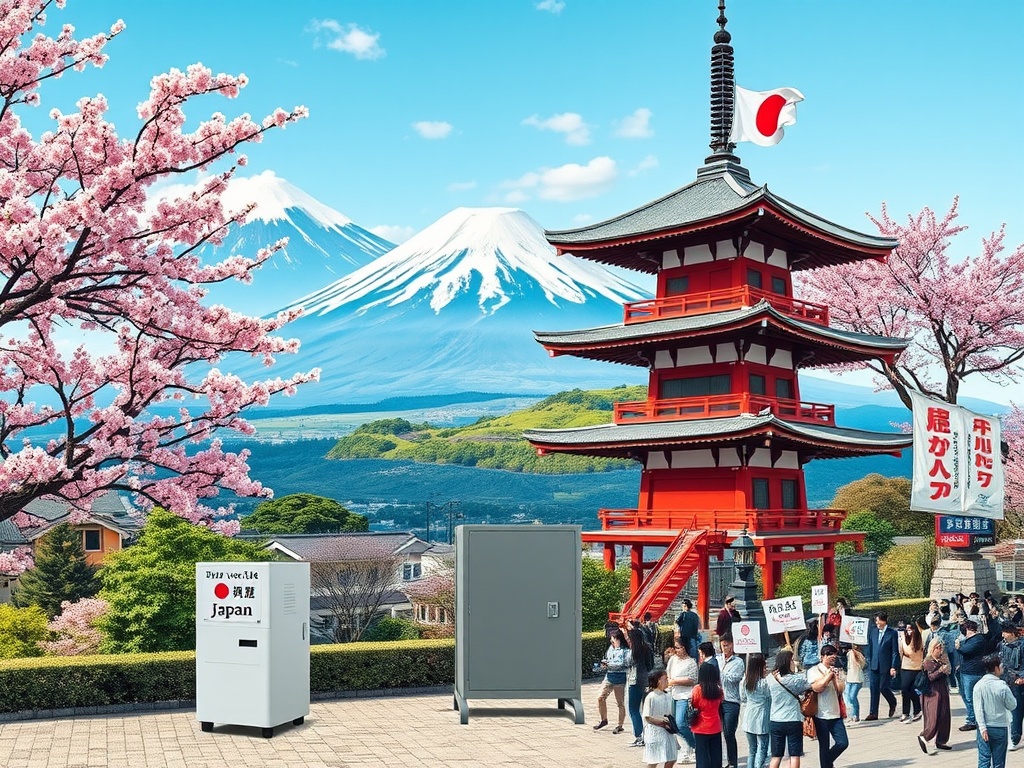The Chrysanthemum Throne: Exploring Japan’s Ancient Monarchy
Win a Free Trip to Japan!
Experience cherry blossoms and ancient temples
Travelers to Japan often find themselves captivated by the country’s rich tapestry of culture and history. At the heart of this intricate weave stands the Chrysanthemum Throne, a symbol of the world’s oldest hereditary monarchy. As you explore Japan, understanding this ancient institution offers a deeper appreciation for the nation’s past and present.
The Chrysanthemum Throne is not merely a seat of power; it embodies centuries of tradition and national identity. The chrysanthemum flower, with its 16 petals, is the Imperial Seal of Japan, representing the emperor’s status and the enduring nature of the monarchy. This emblem can be seen subtly adorning passports, coins, and government documents, reminding travelers of the historical depth that permeates modern Japan.
From its mythic origins to its contemporary role, the Japanese monarchy has evolved, yet it remains a cornerstone of the nation’s culture. Here are some key historical milestones to consider:
- 660 BC: The legendary Emperor Jimmu, said to be a descendant of the sun goddess Amaterasu, is traditionally credited as the first emperor.
- 1192: The establishment of the shogunate diminishes the emperor’s political power, shifting the monarchy’s role to one of spiritual leadership.
- 1868: The Meiji Restoration restores imperial power, marking a period of rapid modernization and the emperor’s reemergence as a central figure.
- 1947: Post-WWII reforms redefine the emperor’s role as a symbol of the state, marking a new era for the monarchy.
For those interested in experiencing the legacy of the Chrysanthemum Throne firsthand, Japan offers a wealth of imperial sites worth visiting. From the opulent halls of Tokyo’s Imperial Palace to the serene beauty of Kyoto’s Imperial Villa, these locations provide a window into the grandeur and ceremonial importance of Japan’s monarchy.
Whether you’re wandering through the meticulously manicured gardens or attending a rare public appearance by the Emperor, each visit is a journey through time, offering a glimpse into the living history of the world’s oldest monarchy.
From Shoguns to Prime Ministers: Japan’s Political Evolution
For travelers eager to delve into the depths of Japan’s political history, understanding the evolution from shoguns to the modern-day prime ministers offers a fascinating journey through time. This transformation highlights the resilience and adaptability of Japan’s political framework, reflecting the shifts in power dynamics and governance styles over the centuries.
The shogunate era, beginning in the late 12th century, marked a significant shift in Japan’s political landscape. The shoguns, military leaders who ruled in the name of the emperor, established a feudal system that lasted until the mid-19th century. This era saw the rise of powerful clans and samurai warriors, who were the backbone of the shogunate’s military might. Visitors can explore historic sites linked to this period, such as the ancient city of Kamakura, once the seat of power for the first shogunate, or the storied castles of the Tokugawa shogunate, which offer insights into the military and cultural advancements of the time.
The Meiji Restoration of 1868 was a pivotal moment in Japan’s political evolution, as it marked the end of feudal rule and the beginning of modernization and industrialization. The power returned to the emperor, and Japan embarked on a path of rapid change, adopting Western political systems and technologies. This era not only transformed Japan into a global power but also laid the groundwork for its contemporary political structure. Travelers interested in this transformative period can visit key locations such as the Meiji Shrine in Tokyo, which celebrates the emperor who spearheaded this remarkable transition.
Today, Japan’s political system is a constitutional monarchy with a parliamentary government. While the emperor remains a symbolic figurehead, the real political power resides with the elected officials, headed by the prime minister. This balance between tradition and modern governance is evident in Japan’s vibrant democracy, which continues to evolve while honoring its rich heritage. Key political landmarks in Tokyo, including the National Diet Building, offer visitors a glimpse into the workings of Japan’s government and its ongoing journey of political refinement.
- Key Sites of Political Significance:
- Kamakura: Explore the roots of the first shogunate in this historic city.
- Meiji Shrine: Discover the legacy of Japan’s modernization leader in Tokyo.
- National Diet Building: Witness the hub of Japan’s modern political system.
The Land of the Rising Sun: A Dive into Japan’s Electoral Process
For travelers fascinated by political systems and governance, Japan offers an intricate electoral process that is both a reflection of its unique cultural heritage and its modern democratic principles. As the Land of the Rising Sun continues to blend tradition with contemporary practices, understanding its electoral process provides a fascinating insight into how the nation governs itself in the 21st century.
Japan’s electoral system is a parliamentary democracy that combines elements of both proportional representation and single-member districts. This dual structure ensures a balanced representation of the diverse political landscape. The House of Representatives, the lower house, is elected through a mix of these two systems, which emphasizes both local representation and broader political trends. Meanwhile, the House of Councillors, the upper house, features a similar blend but with a staggered election cycle that maintains stability and continuity in governance. Travelers exploring Japan’s political scene will find a system that respects historical roots while embracing modern democratic ideals.
The political landscape in Japan is dominated by major parties like the Liberal Democratic Party (LDP) and the Constitutional Democratic Party of Japan (CDP), alongside a vibrant array of smaller parties that contribute to a dynamic and sometimes unpredictable political atmosphere. Understanding these parties’ influences and their role in shaping policy can be thrilling for those interested in how Japan navigates domestic and international challenges. Visitors can explore this political tapestry by visiting party headquarters in Tokyo or attending public political events, offering a first-hand experience of Japan’s lively political discourse.
Election seasons in Japan are bustling times filled with vibrant street campaigns, televised debates, and public events that bring the democratic spirit to life. For travelers, this period offers a unique opportunity to witness democracy in action, with the chance to see how candidates engage with the public and how policies are debated and discussed. From the energetic campaigns in urban Tokyo to the more subdued but equally significant rural contests, the electoral process is a vivid illustration of Japan’s commitment to its democratic values. Engaging with this process allows visitors to appreciate the complexities and nuances of Japan’s political system, beyond the typical tourist experiences.
Political Festivals: When Tradition Meets Modern Governance
Japan, a country where age-old traditions gracefully intertwine with contemporary systems, offers travelers a fascinating insight into its political landscape through its unique political festivals. These festivals are more than just celebrations; they are vibrant expressions of Japan’s historical continuity and modern political engagement, creating a bridge between its rich past and its dynamic present.
Visiting Japan during one of its political festivals provides travelers with an opportunity to witness how deeply ingrained cultural heritage shapes modern political expression. Events such as the Mikoshi parades during electoral seasons offer a colorful spectacle where tradition meets the fervor of political campaigning. These parades often feature portable shrines carried through the streets, accompanied by chanting and music, symbolizing the harmonious blend of political fervor and cultural identity.
In urban centers like Tokyo and historical cities such as Kyoto, political festivals draw vast crowds, offering a unique glimpse into the nation’s collective spirit. As locals and visitors alike immerse themselves in these lively celebrations, they can observe how Japan’s political values are celebrated with a sense of pageantry that is both ancient and refreshingly current.
Political festivals in Japan are not only about celebration; they also play a crucial role in promoting civic engagement and awareness. These events provide a platform for citizens to express their opinions and participate actively in the democratic process. By attending speeches, rallies, and debates that often accompany these festivals, travelers can engage with local issues and understand the nuances of Japan’s political discourse.
Moreover, these festivals foster a sense of community and participation, as they involve a wide range of activities from traditional dance performances to modern political discussions. This participation echoes Japan’s dedication to maintaining a balanced political system that respects its cultural heritage while embracing democratic ideals.
The vibrant atmosphere of political festivals in Japan invites travelers to delve deeper into the heart of its political system, offering an unforgettable experience that highlights the country’s ability to harmonize tradition with modern governance.
Behind the Scenes: Japan’s Intricate Political Parties
For travelers eager to explore Japan’s political landscape, diving into the world of its political parties offers an engaging journey into the heart of the country’s modern governance. Japan’s political parties are not mere powerhouses of policy-making; they are dynamic entities that shape the nation’s culture, identity, and future trajectory. Beyond the public facade of political rallies and debates lies a complex network of alliances, ideologies, and historical roots that provide a deeper understanding of Japan’s governance.
Japan’s political scene is dominated by a few major parties that have historically held significant sway over the country’s direction. The Liberal Democratic Party (LDP), known for its conservative stance and economic policies, has been a dominant force since the post-war era. Then there’s the Constitutional Democratic Party of Japan (CDP), which advocates for social democracy and progressive reforms. Both parties offer contrasting visions for Japan’s future, making their interactions and rivalries a fascinating subject for political enthusiasts.
Key Characteristics of Major Political Parties:
- Liberal Democratic Party (LDP): Known for stability and economic growth initiatives.
- Constitutional Democratic Party of Japan (CDP): Focuses on social welfare and civil liberties.
Amidst the giants, Japan’s political landscape is dotted with smaller parties that often act as catalysts for change. These parties might not hold significant power individually, but they play a crucial role in shaping policy and public opinion. From environmental advocacy to regional issues, these parties bring diversity to the political discourse, ensuring that a wide range of voices are heard in the democratic process.
Travelers with a keen interest in political dynamics will find exploring these minor parties a rewarding endeavor. Their headquarters and events can often be found in urban areas like Tokyo, where political life is vibrant and accessible.
Understanding Japan’s political parties also involves peering into the intricate alliances and factionalism that characterize its political system. Within major parties, factions often vie for influence, shaping leadership and policy direction. These internal dynamics can sometimes lead to surprising political shifts and decisions that impact not only domestic policies but also Japan’s stance on global issues.
For the curious traveler, attending political discussions or visiting party offices during election seasons can provide a window into these behind-the-scenes dynamics, offering insights into how Japan’s political machine functions beneath the surface.
Bureaucracy and Beyond: Understanding Japan’s Government Machinery
For those captivated by the intricate workings of political systems, Japan offers a fascinating case study in governance. The nation’s political framework is not just about the elected officials and public faces; it is deeply rooted in a complex and efficient bureaucracy that keeps the wheels of government turning. As you explore this Land of the Rising Sun, delving into its government machinery unveils a world where tradition meets modern efficiency, providing insights into how this nation remains a global powerhouse.
At the core of Japan’s governmental structure lies its bureaucratic system—an intricate network of agencies and ministries that implement policies and manage day-to-day administrative functions. This system is renowned for its effectiveness and stability, with a workforce known for its dedication and professionalism. Travelers interested in understanding how Japan maintains its rapid pace of development will find that the country’s bureaucrats, often referred to as the unsung heroes of the nation, play a pivotal role. This machinery is not only a testament to Japan’s ability to blend efficiency with cultural heritage but also a reflection of its commitment to public service.
Japan’s governance structure is an intriguing blend of traditional values and modern principles. The influence of Confucian ideals, emphasizing hierarchy and respect for authority, is evident in the bureaucratic culture. Yet, this is seamlessly integrated with contemporary management practices that emphasize innovation and adaptability. Such a blend ensures that Japan remains at the forefront of technological advancements while retaining its unique cultural identity. For visitors, exploring this aspect of Japan’s political system offers a glimpse into how ancient philosophies still influence modern governance.
Travelers with a keen interest in political systems can witness the machinery of Japan’s government in action through visits to key administrative hubs. The Kasumigaseki district in Tokyo, home to various ministry buildings, provides an opportunity to observe the hustle and bustle of bureaucratic life. Moreover, engaging with locals and participating in guided tours often available in these areas can offer deeper insights into how policies are crafted and executed. This experience not only enriches your understanding of Japan’s political landscape but also highlights the country’s commitment to transparency and accountability.



